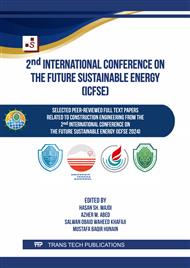p.3
p.19
p.31
p.47
p.63
p.75
p.85
p.97
p.111
Employing Clean Energies in the Design of Contemporary Buildings, Review
Abstract:
Energy problems and the search for effective solutions to solve its various crises represent one of the most important problems facing societies and countries, and the consequent economic problems represented in costs and resources, in addition to its negative effects and accompanying environmental effects. And health problems for humans and their environmental surroundings. Therefore, architecture has tended over the years to search for self-sufficiency in its buildings as one of the solutions that can contribute to saving energy. With its external environment on the other hand, and to achieve these goals, the designers resorted to employing a set of mechanisms and strategies in the designs of its buildings and within the stages of designing and operating the buildings, as the paper aims to (discover and clarify the mechanisms and strategies that designers adopt to employ clean energies in the design of contemporary buildings). In its theoretical framework, a group of studies dealt with defining the possibilities of employing clean energies and reviewing the possibilities of employing them in traditional architecture, up to contemporary architecture. Its applied side also deals with a group of contemporary and modern architectural projects and analyzes the design mechanisms adopted by the designers to reach a more healthy and less polluted environment, which are the mechanisms through which we can employ them in the construction of our buildings in our local communities and reach healthier and more prosperous cities and reduce economic costs.
Info:
Periodical:
Pages:
111-119
Citation:
Online since:
June 2024
Authors:
Keywords:
Price:
Сopyright:
© 2024 Trans Tech Publications Ltd. All Rights Reserved
Share:
Citation:



